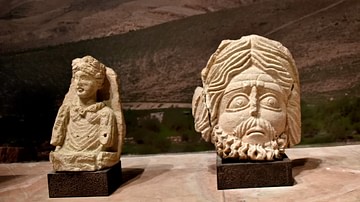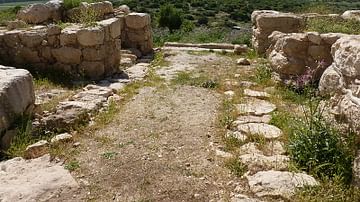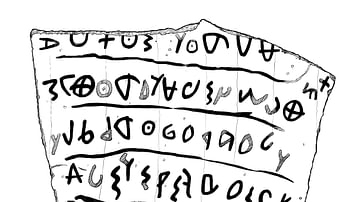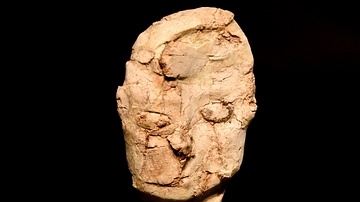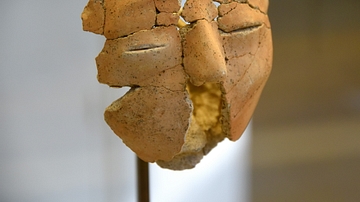Illustration
Plaster figurines were usually made in human and animal forms. Most of them depicted a female figure with raised arms, dressed in a long garment, and often decorated with a small mirror; very few had depicted male figures. These figurines were most probably dolls, and many of them were found with mirrors inside tombs. It is hypothesized that those dolls and mirrors might represent a symbol of virginity, especially when found in juvenile female burials. Byzantine period, early 7th century CE. From Khirbet as-Samra, northeast of Zarqa, Jordan. (The Jordan Museum, Amman, Jordan).
About the Author
Cite This Work
APA Style
Amin, O. S. M. (2019, February 18). Plaster Figurine from Khirbet as-Samra. World History Encyclopedia. Retrieved from https://www.worldhistory.org/image/10103/plaster-figurine-from-khirbet-as-samra/
Chicago Style
Amin, Osama Shukir Muhammed. "Plaster Figurine from Khirbet as-Samra." World History Encyclopedia. Last modified February 18, 2019. https://www.worldhistory.org/image/10103/plaster-figurine-from-khirbet-as-samra/.
MLA Style
Amin, Osama Shukir Muhammed. "Plaster Figurine from Khirbet as-Samra." World History Encyclopedia. World History Encyclopedia, 18 Feb 2019. Web. 30 Mar 2025.



